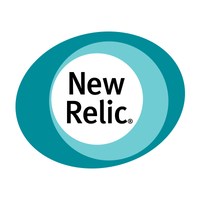Users and customers are an impatient lot. It wasn’t so long ago that it was acceptable to wait for a letter to arrive to hear news about something. Now we want it all now. It’s the same with computing. As devices and network connections have improved, so too have user expectations. They don’t want to wait a millisecond for an app to open or a web page to appear. And that’s where application performance management (APM) comes in.
APM refers to the management of the performance of software as a means of ensuring that the expected level of service is being provided. APM takes advantage of a variety of performance metrics such as throughput, IO, and various user experience parameters. The goal is to pinpoint performance issues before users notice that anything is wrong. IT can then fix the issue before user calls inundate the Help Desk. APM software makes it possible for IT to observe application behavior, understand infrastructure dependencies, and correlate this with the user experience and compare to key performance indicators (KPIs).
Also read: The Importance of Application Performance Management (APM) for Cloud-based Networks
Key APM Features
The core capabilities of APM tools vary from vendor to vendor. They include all or most of the following:
- Automated discovery and mapping of applications and related infrastructure components existing within the network.
- Ability to observe the transactional behavior of applications
- Ability to monitor mobile and browser-based applications.
- Root causes investigation of performance problems.
- Integration with other enterprise applications used in management.
- Ability to analyze KPIs, times of login and logout, etc.
- Ability to integrate data from third-party sources.
- Visibility across end users, applications, networks, and the cloud.
Use Cases for APM
APM can handle several critical functions, including:
- Unified monitoring of applications, networks, and the cloud in order to share common data models and perform correlation analysis and other critical APM functions.
- APM has morphed from purely applications monitoring into a tool that helps in monitoring the entire business. Increasingly, APM tools are becoming parts of larger monitoring suites.
- Digital transformation is going full blast in many industries and APM assists in such initiatives via integration with key performance indicators (KPIs) and other business analytics systems.
- IT observability extended from on-premises into the cloud and into multi-cloud as well as hybrid environments.
- Full stack observability of data from infrastructure to applications.
Also read: How Data Centers Must Evolve in the Cloud First Era
How to Select the Right APM Solution
Those evaluating APM software should consider the following:
- As opposed to a single-function APM, the modern market provides more comprehensive tools that integrate with IT Service Management (ITSM), analytics, and other functions. Vendor to vendor, these additional functions vary tremendously. Therefore, it is important to match the suite to what you need, not what a particular vendor happens to offer.
- Certain APM tools are more suited to specific applications than others. Test them in your own environment.
- Many organizations now run in hybrid and multi-cloud environments. APM tools must be able to cope with such a setting.
- Those who are already heavily invested in products from vendors from the likes of Cisco, Microsoft, and Splunk should consider their APM offerings first in order to take advantage of packages, discounts, and integration benefits.
Top APM Vendors
Aternity

Key Differentiators:
- Combines cloud-native APM capabilities with end-user experience monitoring, device performance monitoring, and benchmarking into a single digital experience management platform.
- By combining insights from every aspect of the digital experience, Aternity provides the business intelligence to understand the state of any digital experience, take action to improve it, and measure its impact on the business over time.
- Identify and resolve application problems that impact employees or customers at scale.
- Ability to find root causes of application performance issues due to visibility into all aspects of the digital experience.
- Provided as a SaaS solution.
Cisco AppDynamics

Key Differentiators:
- Real-time ingestion and analysis of data across the stack, auto-discovery and mapping, anomaly detection and more.
- By connecting application performance to customer experience and business outcomes, it helps to reduce noise, support efficient teamwork, gather and analyze data across the entire stack, and provide insights to help improve business experience and results.
- Monitor everything from customer-facing applications down to core network and infrastructure with its full-stack observability (FSO) offering.
- With FSO, AppDynamics enables the ability to identify and address performance issues across applications, as well as contextualize the IT performance insights with real-time business data.
- By viewing the performance of the application through real-time business analytics and enabling businesses to clearly understand the impact application performance issues have on their KPIs, AppDynamics helps users prioritize their work based on impact to the business.
- Since being acquired by Cisco, AppDynamics can offer integration with a wide range of networking, storage, and compute platforms.
Elastic

Key Differentiators:
- It is also available as a free and open version.
- Complements Elasticsearch data analytics.
- Native support for OpenTelemetry traces and metrics.
Dynatrace

Key Differentiators:
- As well as APM, Dynatrace provides AIOps, application security, digital experience, business analytics, and cloud automation.
- Goes beyond gathering data to provide observability and unparalleled AIOps to make clouds work.
- Strategic partnerships with major players including Amazon, Google, and Microsoft, and is the only observability platform on the AWS, GCP, and Azure marketplaces.
- Multi-cloud observability that spans applications, infrastructure, user experience, AIOps, automation, and application security.
- Combines an AI engine, and automation for continuous discovery, anomaly detection, and optimization analysis.
Microsoft

Key Differentiators:
- Update Windows and Linux systems across hybrid environments.
- Helps simplify configuration management in the cloud.
- Collect inventory of operating system resources and track changes.
- Multi-cloud support.
- Monitoring of on-premises workloads.
- Ability to monitor application, infrastructure, and log data.
- Can utilize Microsoft Azure Monitor log analytics.
New Relic

Key Differentiators:
- New Relic’s APM capabilities are available out-of-the-box with full-stack observability in New Relic One.
- Provides DevOps teams with a single source of truth to troubleshoot, debug, and optimize performance.
- The platform provides context and surfaces insights from logs, infrastructure and applications, distributed tracing, and serverless functions.
- An app performance at a glance summary gives the user insight into web transaction response time, and transaction traces.
- Drill down to the worst area and fix the problem at the root, optimizing app performance.
- Monitor all aspects of the business on one screen.
- No need to program pre-configured alerts. The system automatically groups alerts and informs engineers based on time and frequency, cutting down on alert fatigue.
Splunk

Key Differentiators:
- Provides DevOps teams with a one-stop shop to see errors and latency across all the tags of any given service.
- Enhanced offerings in areas such as real user monitoring and network monitoring.
- Acquisitions of Plumbr, Rigor, Flowmill, and others provide access to multiple monitoring and security features such as monitoring for enterprise applications.
- In addition to monitoring and security functions, Splunk offerings provide AIOps and automation functionality.
- Support for the largest environments:
Datadog

Key Differentiators:
- APM, log management and related monitoring delivered as SaaS deployments.
- Recently added a security analysis tool.
- Collects, prepares and presents telemetry data from logs and various metrics, providing context to reduce incident response time.
Read next: Hyperconverged Infrastructure is Reshaping IT Management


